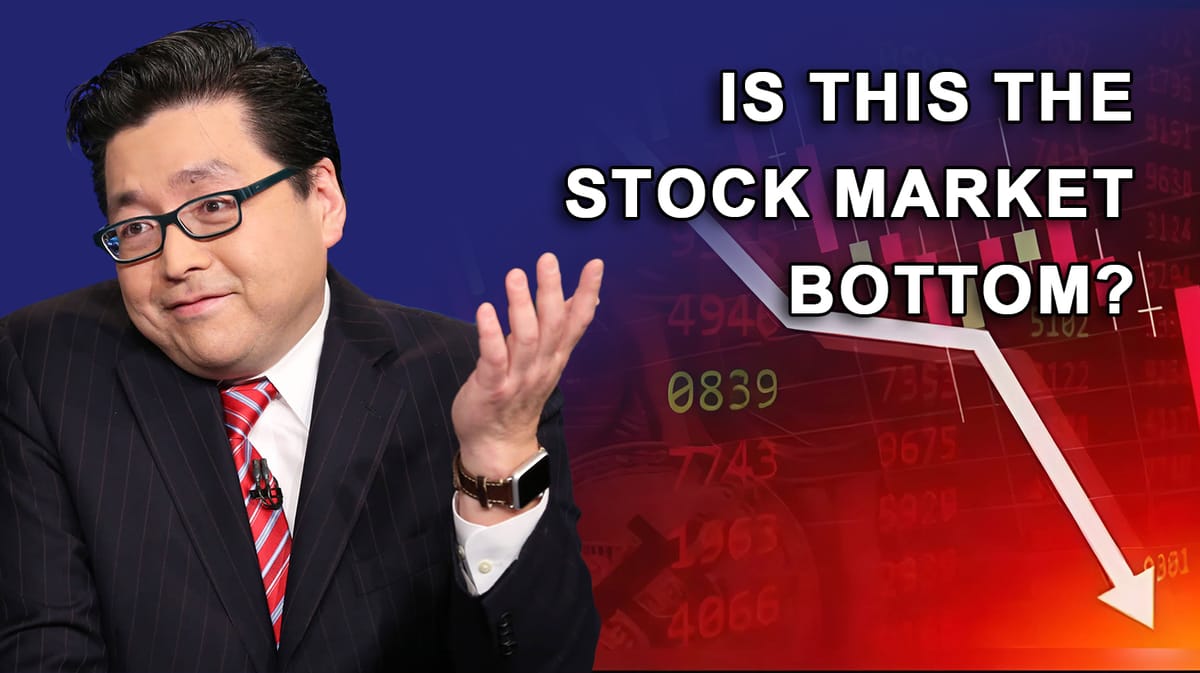Is This The Stock Market Bottom?

In a world where financial markets often feel like a roller coaster, finding solid ground can seem elusive. However, recent tides have shifted in the stock market with analyst Tom Lee making a massive prediction that we may have reached a bottom. His insights, paired with recent comments from Fed Chair Jerome Powell, offer a fresh perspective on potential growth opportunities. Coupled with robust data from jobless claims and visionary insights from Nvidia's CEO, these signals suggest a unique moment for market participants to reassess their strategies. Could this really be the turning point everyone has been waiting for?
Tom Lee’s Market Bottom Theory
Tom Lee, celebrated for his keen analysis, emphasizes the confluence of global and domestic factors indicating a market bottom. He argues that market corrections after recent peaks have priced in a potential recession. The Fed's stance on rate cuts, spurred by unexpected Fed discussions about tariffs and economic outlook, provides foundational resilience against further downturns. Investors should note, he suggests, how similar market behaviours during crises have historically led to recoveries. Tom Lee said, "The Fed put is now more Alive and Kicking than ever," reiterating that investor behaviour should adapt accordingly.
Fed Dynamics and Larger Economic Implications
Powell's latest statements have been pivotal, suggesting no immediate alarm over tariffs, offering reassurance against inflation fears. His outlook hints at a flexible economic approach, which could include future rate cuts, an attractive scenario for the stock market in the short term. However, the unpredictability of tariff policy means investors need to stay vigilant, recognizing that the Fed's neutral stance today could shift tomorrow. Consistent monitoring of economic signals remains critical for capturing the market's potential rebound.
Global Trade Developments: The Tariff Solution
International tariffs have become a flashpoint in global economic discussions. Lee postulates that the markets have already priced in these tensions, expecting a resolution in the near future. Historical data supports this logic, as during prior economic blocks like the Cuban Missile Crisis, markets rebounded swiftly post-crisis. As cross-border negotiations evolve, the potential for an agreement remains a critical market influencer that investors should keep on their radar.
Jobless Claims: A Stabilizing Market Element
Amidst concerns of recession, recent jobless claims offer a glimmer of stability. Numbers have held steady, with no drastic layoffs reported, suggesting underlying economic resilience. While this doesn’t dismiss overall economic challenges, it supports the notion that fears of an impending economic collapse might be overstated. Investors should weigh this against broader economic signals, using it as part of a diversified analysis strategy.
Robotics and AI: The Future of Industries
Nvidia CEO Jensen Huang sparked conversation with his prediction of AI-driven robotics becoming household fundamentals, forecasting a major shift in labour markets. This anticipated change indeed poses substantial growth for companies like Tesla, which have been pioneers in AI and robotic innovations. The potential for significant revenue from these technologies presents a compelling case for investments in relevant companies, underscoring the transformative power of AI and its industrial implications.
Tesla’s Ascent in Robotics
As Tesla navigates this emerging landscape, it stands poised as a leader in AI and robotics. Its strategic advantage in research and development, coupled with its manufacturing prowess, highlights its potential to command sectors worth trillions in market value. Despite current market fluctuations, Tesla’s commitment to innovation places it within a strong trajectory for future success. For the astute investor, understanding the long-term value of such technological advancements is essential.
Long-term Investing: Finding Opportunities Amidst Volatility
Market corrections, though intimidating, present avenues for savvy investments. The principle of dollar-cost averaging allows investors to hedge against volatility while positioning for positive returns. By focusing on company fundamentals, like those seen with Tesla and Nvidia, investors can strategically capture value. The journey to becoming a proficient long-term investor involves mastering emotional resilience and insightful analysis, as echoed by the narrative of successful tennis players where mental fortitude distinguishes the top echelons.
Conclusion: Seizing the Moment
Navigating today's financial markets requires both courage and clarity. As Tom Lee and other investors signal potential opportunities, the need to cut through the noise has never been greater. The momentary alignment of economic signals with visionary industry developments presents a rare synchronicity. While risks undoubtedly remain, the forward-looking investor sees potential where others see crisis. As history shows, balanced judgment combined with strategic action cultivates success in the complex markets of tomorrow.